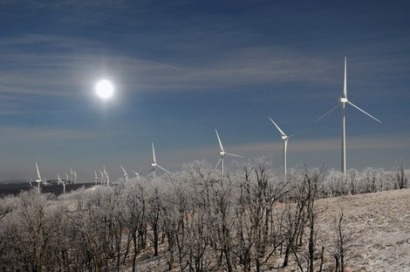
The solution is called ‘Bladeshield’ and it is the result of the development of an innovative procedure for obtaining the mix involving the dissolution of the additive in an ideal dispersing agent and then in the paint base. This results in a homogenous mix that improves, even doubles, the paint's anti-erosion and durability properties.
The project to develop the paint was part of the Azimuth project for the development of offshore technology, sponsored by the CDTI (Centre for the Development of Industrial Technology). It is the result of three years of research into the use of new raw materials in wind energy, specifically the application of nanomaterials in the development of coatings. The aim of Bladeshield is to help satisfy a growing need for systems that optimise blade performance and availability at wind farms located in cold regions.
“Although Gamesa already had blade de-icing systems, it has developed this innovative solution in anticipation of the emerging needs of our increasingly sophisticated and demanding customers” said José Antonio Malumbres, Gamesa's Chief Technology Officer. “Most of the anti-icing solutions on the markets studied within Azimut project reduce blade paint´s resistance to erosion. Gamesa has attempted to remain one step ahead, using nanomaterials to create a system that not only prevents ice formation but also improves anti-erosion performance.”
Gamesa has also unveiled two systems for detecting and eliminating ice on blades that have been custom-developed for Gamesa's suite of 2.0-2.5 MW turbines. The company’s portfolio includes turbines that have been specially developed for sites subjected to extreme weather conditions, including sub-zero temperatures. In accordance with this policy the company is developing another ice prevention system in collaboration with Finnish technology provider VTT for its platform of 5.0MW turbines.
The deployment of wind farms in cold climates is growing with EWEA forecasts indicating 45 to 50 gigawatts of wind energy in cold climates by 2017. Gamesa already has a presence in northern Europe, particularly Finland, where it has signed two framework agreements with Tuuliwatti for the supply of 285 MW and 135 MW, and Sweden, where it has been contracted to supply four G114-2.0 MW turbines to Eolus Vind. The company also has a presence in Canada and China.
For additional information:

